Derek Meddings is a Actor, Visual Effects and Special Effects British born on 15 january 1931 at London (United-kingdom)
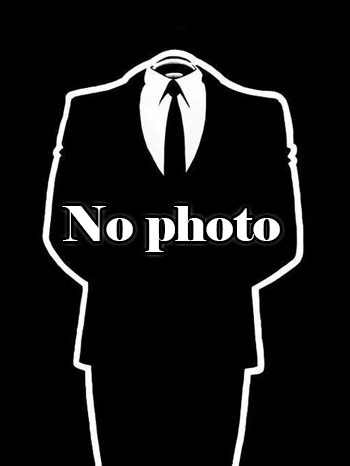
Derek Meddings (15 January 1931 – 10 September 1995) was a British film and television special effects designer, initially noted for his work on the "Supermarionation" TV puppet series produced by Gerry Anderson, and later for the 1970s and 1980s James Bond and Superman film series.
Both Meddings' parents had worked in the British film industry: his father as a carpenter at Denham Studios and his mother as producer Alex Korda's secretary and Merle Oberon's stand-in. Meddings went to art school and, in the late 1940s, also found work at Denham Studios, lettering credit titles. It was there that he met effects designer Les Bowie and joined his matte painting department.
During the 1950s, Meddings' work with Bowie included the creation of Transylvanian landscapes for Hammer Films and a "string and cardboard" invention that proved useful when Meddings was hired for Gerry Anderson's earliest TV puppet series.
Gerry Anderson productions
Meddings' first work with Anderson was as an uncredited art assistant on Anderson's first puppet series, Torchy the Battery Boy, produced in 1957. In 1960, he painted cut-out backgrounds of ranch houses and picket fences for Four Feather Falls. He was credited with the special effects in Anderson's 1960 and 1962 series Supercar and Fireball XL5, being elevated to special effects director for Stingray (1964) for which he and Reg Hill designed the main models. Meddings became special effects supervisor for Thunderbirds (1965–66), during which time he was responsible for the design of the Thunderbird machines themselves. He was visual effects supervisor for all the Anderson puppet series of the late 1960s (Captain Scarlet and the Mysterons, Joe 90 and The Secret Service) and also Anderson's first live-action series, UFO, at the start of the 1970s. He performed the same role on Anderson's three 1960s feature films, Thunderbirds Are Go (1966), Thunderbird 6 (1968) and the live-action Doppelgänger (1969; also known as Journey to the Far Side of the Sun). During his time working on these series, Meddings and his team developed a number of innovations in the filming of miniature models and landscapes which have since become standard in the industry.
James Bond films
In the 1970s Meddings furthered his career by working on the special effects for the James Bond films. He first impressed producer Cubby Broccoli with some miniature effects that he had created for Live and Let Die (1973). Once Broccoli realised the economic advantages of building detailed models instead of expensive full-sized constructions, Meddings was encouraged to come up with design concepts for the next film in the series, The Man with the Golden Gun (1974). After this, he was contacted by Pink Floyd and Derek handled all the pyrotechnics on the Pink Floyd shows in 1975.
He returned to the James Bond films in 1977 with The Spy Who Loved Me. Among other tasks, Meddings spent four months on location in the Bahamas, where he supervised the construction of a "miniature" supertanker more than 60 ft (18 m) long and three "miniature" nuclear submarines for exterior sequences filmed at sea in shark-infested waters. He also designed and built the Lotus Esprit car which converted into a submersible, cleverly intercutting full-sized body shells with one-quarter-scale miniatures.
For Moonraker (1979), Meddings created and photographed miniatures of Drax's space shuttles and space station and also realised the final space battle. Due to the film's tight schedule, Meddings was unable to use optical compositing (which is a lengthy process due to the extensive film processing involved) to combine the different elements for the space sequences. Instead, they were combined in-camera using multiple passes of the same piece of film. Film would sometimes be exposed as many as 90 times to capture the dozens of separately photographed elements. The film was nominated for the Academy Award for Visual Effects.
Other work
In 1975, Meddings created cost-effective model monsters which could be photographed in the same frame as the actors in the prehistoric adventure film The Land That Time Forgot.
On Superman (1978), his work included building a 60 ft (18 m) miniature of the Golden Gate Bridge to be destroyed in an earthquake, complete with a colliding scale school bus and cars, while Superman (suspended on wires) flew in to the rescue. He also built and photographed the Krypton miniatures in addition to a large-scale model of the Hoover Dam. Due to the film's schedule overruns and Meddings' own commitments to the James Bond series, he was unable to complete the dam flooding sequence and the production hired a California-based company to complete the sequence – resulting in some visibly inferior miniature work in the latter part of the film.
Meddings believed that he was asked to supervise the effects for Batman (1989) because director Tim Burton was a fan of his work on Thunderbirds.
Meddings set up his own visual effects company, The Magic Camera Company, based at Lee International Studios in Shepperton. For The Neverending Story II: The Next Chapter (1990), he established another company in Germany. He appeared once as an actor, in the role of Dr Stinson in Spies Like Us (1985).
 (1989)
(1989)
(Visual Effects) (1978)
(1978)
(Modeling) (1981)
(1981)
(Visual Effects Supervisor) (1980)
(1980)
(Visual Effects)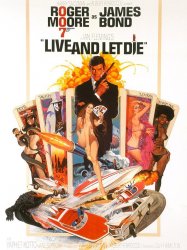 (1973)
(1973)
(Special Effects) (1974)
(1974)
(Visual Effects)
Source : Wikidata
Derek Meddings

- Infos
- Photos
- Best films
- Family
- Characters
- Awards
Nationality United-kingdom
Birth 15 january 1931 at London (United-kingdom)
Death 10 september 1995 (at 64 years) at Cookham (United-kingdom)
Awards Special Achievement Academy Award
Birth 15 january 1931 at London (United-kingdom)
Death 10 september 1995 (at 64 years) at Cookham (United-kingdom)
Awards Special Achievement Academy Award
Biography
Early yearsBoth Meddings' parents had worked in the British film industry: his father as a carpenter at Denham Studios and his mother as producer Alex Korda's secretary and Merle Oberon's stand-in. Meddings went to art school and, in the late 1940s, also found work at Denham Studios, lettering credit titles. It was there that he met effects designer Les Bowie and joined his matte painting department.
During the 1950s, Meddings' work with Bowie included the creation of Transylvanian landscapes for Hammer Films and a "string and cardboard" invention that proved useful when Meddings was hired for Gerry Anderson's earliest TV puppet series.
Gerry Anderson productions
Meddings' first work with Anderson was as an uncredited art assistant on Anderson's first puppet series, Torchy the Battery Boy, produced in 1957. In 1960, he painted cut-out backgrounds of ranch houses and picket fences for Four Feather Falls. He was credited with the special effects in Anderson's 1960 and 1962 series Supercar and Fireball XL5, being elevated to special effects director for Stingray (1964) for which he and Reg Hill designed the main models. Meddings became special effects supervisor for Thunderbirds (1965–66), during which time he was responsible for the design of the Thunderbird machines themselves. He was visual effects supervisor for all the Anderson puppet series of the late 1960s (Captain Scarlet and the Mysterons, Joe 90 and The Secret Service) and also Anderson's first live-action series, UFO, at the start of the 1970s. He performed the same role on Anderson's three 1960s feature films, Thunderbirds Are Go (1966), Thunderbird 6 (1968) and the live-action Doppelgänger (1969; also known as Journey to the Far Side of the Sun). During his time working on these series, Meddings and his team developed a number of innovations in the filming of miniature models and landscapes which have since become standard in the industry.
James Bond films
In the 1970s Meddings furthered his career by working on the special effects for the James Bond films. He first impressed producer Cubby Broccoli with some miniature effects that he had created for Live and Let Die (1973). Once Broccoli realised the economic advantages of building detailed models instead of expensive full-sized constructions, Meddings was encouraged to come up with design concepts for the next film in the series, The Man with the Golden Gun (1974). After this, he was contacted by Pink Floyd and Derek handled all the pyrotechnics on the Pink Floyd shows in 1975.
He returned to the James Bond films in 1977 with The Spy Who Loved Me. Among other tasks, Meddings spent four months on location in the Bahamas, where he supervised the construction of a "miniature" supertanker more than 60 ft (18 m) long and three "miniature" nuclear submarines for exterior sequences filmed at sea in shark-infested waters. He also designed and built the Lotus Esprit car which converted into a submersible, cleverly intercutting full-sized body shells with one-quarter-scale miniatures.
For Moonraker (1979), Meddings created and photographed miniatures of Drax's space shuttles and space station and also realised the final space battle. Due to the film's tight schedule, Meddings was unable to use optical compositing (which is a lengthy process due to the extensive film processing involved) to combine the different elements for the space sequences. Instead, they were combined in-camera using multiple passes of the same piece of film. Film would sometimes be exposed as many as 90 times to capture the dozens of separately photographed elements. The film was nominated for the Academy Award for Visual Effects.
Other work
In 1975, Meddings created cost-effective model monsters which could be photographed in the same frame as the actors in the prehistoric adventure film The Land That Time Forgot.
On Superman (1978), his work included building a 60 ft (18 m) miniature of the Golden Gate Bridge to be destroyed in an earthquake, complete with a colliding scale school bus and cars, while Superman (suspended on wires) flew in to the rescue. He also built and photographed the Krypton miniatures in addition to a large-scale model of the Hoover Dam. Due to the film's schedule overruns and Meddings' own commitments to the James Bond series, he was unable to complete the dam flooding sequence and the production hired a California-based company to complete the sequence – resulting in some visibly inferior miniature work in the latter part of the film.
Meddings believed that he was asked to supervise the effects for Batman (1989) because director Tim Burton was a fan of his work on Thunderbirds.
Meddings set up his own visual effects company, The Magic Camera Company, based at Lee International Studios in Shepperton. For The Neverending Story II: The Next Chapter (1990), he established another company in Germany. He appeared once as an actor, in the role of Dr Stinson in Spies Like Us (1985).
Best films
 (1989)
(1989)(Visual Effects)
 (1978)
(1978)(Modeling)
 (1981)
(1981)(Visual Effects Supervisor)
 (1980)
(1980)(Visual Effects)
 (1973)
(1973)(Special Effects)
 (1974)
(1974)(Visual Effects)
Usually with
Filmography of Derek Meddings (17 films)
Actor
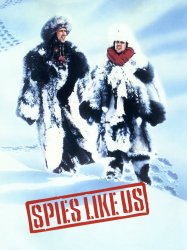
Spies Like Us (1985)
, 1h42Directed by John Landis
Origin USA
Genres Comedy, Action, Adventure, Spy
Themes Spy films, Political films, Buddy films
Actors Chevy Chase, Dan Aykroyd, Steve Forrest, Donna Dixon, Bruce Davison, James Daughton
Roles Dr. Stinson
Rating63%





Austin Millbarge is a geekish, basement-dwelling codebreaker for The Pentagon who aspires to escape his under-respected job to become a secret agent. Emmett Fitz-Hume, a wisecracking, pencil-pushing son of an envoy, takes the foreign service exam under peer pressure. Millbarge and Fitz-Hume meet during the test, on which Fitz-Hume openly attempts to cheat after an attempt to seduce his immediate supervisor in exchange for the answers backfires. Millbarge, however, was forced to take the test, having had only one day to prepare after his supervisor gives him a notice that was two weeks old.
Visual effects

Batman (1989)
, 2h6Directed by Tim Burton
Origin USA
Genres Science fiction, Thriller, Fantasy, Action, Crime
Themes Films about children, Batman films, Superhero films, Super-héros inspiré de comics
Actors Jack Nicholson, Michael Keaton, Kim Basinger, Robert Wuhl, Pat Hingle, Billy Dee Williams
Roles Visual Effects
Rating74%





The mayor of Gotham City orders District Attorney Harvey Dent (Billy Dee Williams) and Police Commissioner James Gordon (Pat Hingle) to increase police activity and combat crime in preparation for the city's bicentennial. Reporter Alexander Knox (Robert Wuhl) and photojournalist Vicki Vale (Kim Basinger) begin to investigate reports of a vigilante dubbed "Batman", who is targeting the city's criminals.

Spies Like Us (1985)
, 1h42Directed by John Landis
Origin USA
Genres Comedy, Action, Adventure, Spy
Themes Spy films, Political films, Buddy films
Actors Chevy Chase, Dan Aykroyd, Steve Forrest, Donna Dixon, Bruce Davison, James Daughton
Roles Visual Effects Supervisor
Rating63%





Austin Millbarge is a geekish, basement-dwelling codebreaker for The Pentagon who aspires to escape his under-respected job to become a secret agent. Emmett Fitz-Hume, a wisecracking, pencil-pushing son of an envoy, takes the foreign service exam under peer pressure. Millbarge and Fitz-Hume meet during the test, on which Fitz-Hume openly attempts to cheat after an attempt to seduce his immediate supervisor in exchange for the answers backfires. Millbarge, however, was forced to take the test, having had only one day to prepare after his supervisor gives him a notice that was two weeks old.

For Your Eyes Only (1981)
, 2h8Directed by John Glen
Origin United-kingdom
Genres Thriller, Action, Adventure, Spy
Themes Films about children, Spy films, Seafaring films, Sports films, Films about terrorism, Transport films, Underwater action films, Political films
Actors Roger Moore, Julian Glover, Carole Bouquet, Chaim Topol, Lynn-Holly Johnson, Lois Maxwell
Roles Visual Effects Supervisor
Rating66%





The British spy boat St Georges, which holds the Automatic Targeting Attack Communicator (ATAC), the system used by the Ministry of Defence to communicate with and co-ordinate the Royal Navy's fleet of Polaris submarines, is sunk after accidentally trawling an old naval mine in the Ionian Sea. MI6 agent James Bond, code name "007", is ordered by the Minister of Defence, Sir Frederick Gray and MI6 Chief of Staff, Bill Tanner, to retrieve the ATAC before the Soviets, as the transmitter could order attacks by the submarines' Polaris ballistic missiles.

Superman II (1980)
, 2h3Directed by Richard Donner, Richard Lester
Origin USA
Genres Science fiction, Fantastic, Fantasy, Action, Adventure
Themes Films about children, Space adventure films, Politique, Films about terrorism, Sur la Lune, Films set in the future, Superman films, Films about extraterrestrial life, Superhero films, Super-héros inspiré de comics, Sur la Lune, Films about extraterrestrial life, Alien invasions in films, Arme nucléaire, Disaster films, White House in fiction
Actors Christopher Reeve, Margot Kidder, Gene Hackman, Ned Beatty, Jackie Cooper, Sarah Douglas
Roles Visual Effects
Rating67%





Prior to the destruction of Krypton, the criminals General Zod (Terence Stamp), Ursa (Sarah Douglas) and Non (Jack O'Halloran) are sentenced to banishment into the Phantom Zone for insurrection and murder, amongst other crimes.

Superman (1978)
, 2h17Directed by Richard Donner, John Glen
Origin United-kingdom
Genres Science fiction, Fantastic, Fantasy, Action, Adventure
Themes Films about children, Time travel films, Superman films, Films about extraterrestrial life, Superhero films, Super-héros inspiré de comics, Films about extraterrestrial life
Actors Marlon Brando, Gene Hackman, Christopher Reeve, Margot Kidder, Jackie Cooper, Ned Beatty
Roles Modeling
Rating73%





On the planet Krypton, using evidence provided by scientist Jor-El, the Ruling Council sentences three attempted insurrectionists, General Zod, Ursa, and Non, to "eternal living death" in the Phantom Zone. Despite his eminence, Jor-El is unable to convince the Council of his belief that Krypton will soon be destroyed when its sun explodes. To save his infant son, Kal-El, Jor-El launches a spacecraft containing him toward Earth, a distant planet with a suitable atmosphere, and where Kal-El's dense molecular structure will give him superhuman powers. Shortly after the launch, Krypton is destroyed.

Shout at the Devil (1976)
, 2h4Directed by John Glen, Peter Hunt
Origin United-kingdom
Genres Drama, War, Thriller, Action, Adventure
Themes Films set in Africa, Political films
Actors Lee Marvin, Roger Moore, Ian Holm, Barbara Parkins, Reinhard Kolldehoff, George Coulouris
Roles Visual Effects
Rating60%





Colonel Flynn O'Flynn (Lee Marvin), a hard-drinking American, manipulates British aristocrat Sebastian Oldsmith (Roger Moore) into helping poach ivory in Tanganyika, which is part of the German-controlled pre-World War I territory of German East Africa. On hearing news that the American has returned, Herman Fleischer, the local German Commander of the Southern Provinces, relentlessly hunts O'Flynn with his Schutztruppen.

The Man with the Golden Gun (1974)
, 2h5Directed by Guy Hamilton
Origin United-kingdom
Genres Thriller, Action, Adventure, Spy
Themes Films about children, Spy films, Films about terrorism
Actors Roger Moore, Christopher Lee, Britt Ekland, Maud Adams, Hervé Villechaize, James Cossins
Roles Visual Effects
Rating66%





In London, a golden bullet with James Bond's code "007" etched into its surface is received by MI6. It is believed that it was sent by famed assassin Francisco Scaramanga, who uses a golden gun, to intimidate the agent. Because of the perceived threat to the agent's life, M relieves Bond of a mission revolving around the work of a scientist named Gibson, thought to be in possession of information crucial to solving the energy crisis with solar power. Bond sets out unofficially to find Scaramanga.

The Land That Time Forgot (1974)
, 1h30Directed by Kevin Connor
Origin United-kingdom
Genres Drama, Science fiction, Fantasy, Adventure
Themes Films about animals, Dinosaur films, Seafaring films, La préhistoire, Transport films, Submarine films, Films based on science fiction novels, Animaux préhistoriques, Political films
Actors Doug McClure, Keith Barron, John McEnery, Susan Penhaligon, Anthony Ainley, Godfrey James
Roles Special Effects Supervisor
Rating56%





The movie begins with Doug McClure as Bowen Tyler narrating the events, much as we see in many Edgar Rice Burroughs novels. A sailor throws a bottle with a written manuscript inside it into the sea, hoping for it to be discovered later.

Doppelgänger (1969)
, 1h41Directed by Robert Parrish
Origin United-kingdom
Genres Drama, Science fiction, Adventure, Spy
Themes Space adventure films, Spy films, Monde imaginaire, Films about sexuality, Sur une planète fictive, Films set in the future, Films about extraterrestrial life, Political films, Space opera, Films about extraterrestrial life
Actors Roy Thinnes, Ian Hendry, Lynn Loring, George Sewell, Patrick Wymark, Philip Madoc
Roles Visual Effects Director
Rating62%





In 2069, the unmanned Sun Probe locates a planet lying on the same orbital path as Earth on the opposite side of the Sun. Dr Kurt Hassler (Herbert Lom) of the European Space Exploration Council (EUROSEC) has been relaying the spacecraft's flight data to a rival power in the East; after tracing the transmissions to Hassler's laboratory, Security Chief Mark Neuman (George Sewell) catches the scientist in the act and kills him. EUROSEC director Jason Webb (Patrick Wymark) convinces NASA representative David Poulson (Ed Bishop) that the West must be the first to send a mission to investigate the planet. With EUROSEC member states France and Germany unwilling to provide financial support, Webb obtains majority funding from NASA; American astronaut Colonel Glenn Ross (Roy Thinnes) and British astrophysicist Dr John Kane (Ian Hendry), the head of the Sun Probe project, are assigned to the mission.
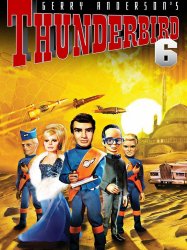
Thunderbird 6 (1968)
, 1h29Directed by David Lane
Origin United-kingdom
Genres Science fiction, Fantasy, Adventure, Spy, Animation
Themes Films set in Africa, Spy films, Films about families, Seafaring films, Transport films, Aviation films, Films set in the future, Children's films, Disaster films
Actors Peter Dyneley, Shane Rimmer, Jeremy Wilkin, Sylvia Anderson, Matt Zimmerman, David Graham
Roles Visual Effects Director
Rating62%





In 2068, the New World Aircraft Corporation (NWAC) provides Brains, the inventor of the Thunderbird machines of the humanitarian International Rescue organisation, with an open brief to design a revolutionary aircraft. Although Brains is ridiculed when he proposes an airship for the 21st century, NWAC accepts his blueprints and builds Skyship One, which will circumnavigate the world on its maiden flight with pre-programmed stopover destinations. Alan, Tin-Tin, Lady Penelope and Parker will represent International Rescue as special guests. Brains, meanwhile, is forced to remain on Tracy Island when Jeff decides that International Rescue requires a Thunderbird 6. Contracted to design this latest addition to the Thunderbirds fleet with no specification, Brains produces a range of concepts, all of which are rejected by Jeff.

Thunderbirds Are GO (1966)
, 1h33Directed by David Lane
Origin United-kingdom
Genres Science fiction, Action, Adventure, Spy, Animation
Themes Space adventure films, Spy films, Films about families, Seafaring films, Transport films, Mars in film, Aviation films, Films set in the future, Films about extraterrestrial life, Space opera, Children's films, Films about extraterrestrial life, Disaster films
Actors Peter Dyneley, Shane Rimmer, Jeremy Wilkin, Sylvia Anderson, Matt Zimmerman, David Graham
Roles Visual Effects Director
Rating63%





In 2065, the Zero-X spacecraft launches from Glenn Field as the first attempt at a manned mission to Mars. Unknown to Captain Paul Travers and his crew of two astronauts and two scientists, criminal mastermind the Hood has infiltrated the ship to photograph Zero-X's wing mechanism. When his foot becomes trapped in the hydraulics, the Hood causes a systems failure and Zero-X loses control. While the villain manages to extract his bloodied foot and parachute from the undercarriage, Travers and his crew eject in an escape pod and Zero-X crashes into the ocean before leaving Earth's atmosphere.
Team

Apprentice to Murder (1988)
Directed by Ralph L. Thomas
Genres Horror
Actors Donald Sutherland, Chad Lowe, Mia Sara, Rutanya Alda, Eddie Jones, Tiger Haynes
Roles Special Effects
Rating50%





Un pasteur qui voit Satan partout, apprend à un jeune garçon crédule "à détecter" le mal et les deux hommes commettent plusieurs meurtres au nom de Jésus. Basé sur une vraie histoire.
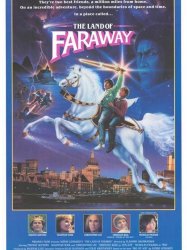
Mio in the Land of Faraway (1987)
, 1h39Directed by Vladimir Grammatikov
Genres Drama, Fantasy, Adventure
Themes Children's films
Actors Christopher Lee, Christian Bale, Nick Pickard, Timothy Bottoms, Susannah York, Sverre Anker Ousdal
Roles Special Effects Technician
Rating62%





The film opens in modern Stockholm. Orphaned by his mother's death and father's disappearance, Bosse (Nicholas Pickard) suffers neglect by his guardians Aunt Edna (Gunilla Nyroos) and Uncle Sixten, as well as abuse from bullies. His best friend is Benke (Christian Bale), whose father Bosse envies. Running away one night to seek his own father, Bosse meets the kindly shopkeeper Mrs Lundin (Linn Stokke), who gives him an apple and asks him to mail a postcard. The postcard is addressed to the Land of Faraway, informing its King of Bosse's impending journey there. After Bosse mails the postcard, his apple turns golden. Dropping the transfigured apple in shock, Bosse stumbles upon a genie (Geoffrey Staines) trapped in a bottle and frees it.

Aces High (1976)
, 1h54Directed by Jack Gold
Origin United-kingdom
Genres Drama, War, Action
Themes Transport films, Aviation films, Political films
Actors Malcolm McDowell, Christopher Plummer, Simon Ward, Peter Firth, John Gielgud, David Wood
Roles Special Effects
Rating64%





In a one-week timeframe, life at the front in a RFC squadron is documented. The real story begins a year before with fighter ace Major John Gresham (Malcolm McDowell) speaking to a class of students at Eton public school in October 1916. One year later, a new recruit arrives at Gresham's base in France, 2nd Lt. Croft (Peter Firth). Gresham had been his house captain at Eton and is also the boyfriend of his older sister. Gresham already relies on alcohol to cope with combat stress and continue flying. Now the strain of being responsible for this young recruit (a potential brother-in-law) is an additional burden. Croft has to learn how to survive not only in the air but on the ground as well as he makes some minor mistakes in squadron etiquette.
 Connection
Connection

